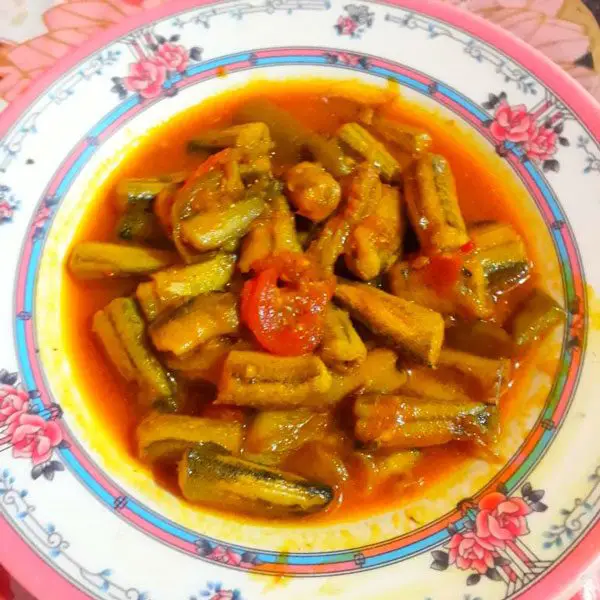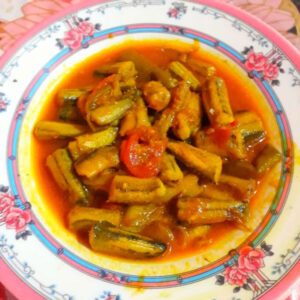Baim/Bain Fish (Zig-Zag Eel)
I’ll be honest. Growing up, baim fish was never one of my favorite fishes. It’s not entirely my fault. We have so many wonderful fish in Bangladesh that baim kind of becomes dull in comparison, lacking all the flare of big fishes like Hilsha or Rui. I did not even eat Baim fish unless it was cooked by my mother. Somehow, she managed to prepare it in a way that did not taste much like other fish. No fishy smell, and not a lot of bones. It almost tasted like kosha mangso (a Bengali-style mutton curry). But in my expat life, I have started to crave fish that I did not care much for before. And baim fish is one of them.
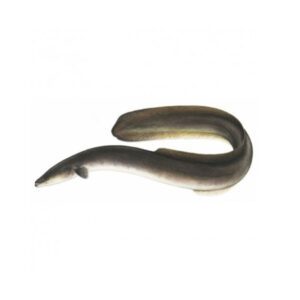
An Introduction to Baim Fish:
For those who are not familiar with this fish, Baim fish, also known as zig-zag eel, or tire track spiny eel is a freshwater fish species native to the rivers of Southeast Asia. The body of the fish is long and thin, and the nose is pointy. The dorsal fin is long and runs along the back to the tail. It can get up to 2 meters long and 1.5 kilograms heavy. In Bangladesh, this fish is widely consumed as food. It is cooked in different ways to make fish curry and other dishes.
Baim Shutki:
Baim shutki is a really good way to preserve and enjoy this delicious fish in any season. There is a common misconception among people that dried and salted fish might not be very beneficial to health but that is not true. In fact, dried fish is a very good source of high-quality proteins, healthy fats (such as omega 3), and other nutrients such as iodine, zinc etc (Siddhnath et al., 2020). One particular concern people often have when cooking shutki is the smell, which can be particularly problematic in a closed apartment space where opening a window may not be an option. A simple solution to this problem is to boil a mixture of water and vinegar in a separate pot while cooking the shutki. This method effectively neutralizes any lingering odors or stench and ensures that your kitchen remains free from the strong smell of dried fish.
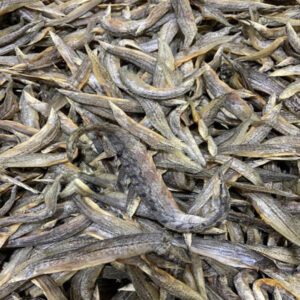
Baim Shutki
Nutrient Contents and Benefits of Eating Baim Fish:
Baim fish is rich in protein, calcium, phosphorus, iron, and vitamin B12, but low in fat, zinc, and vitamin A. It also has a moderate content of essential fatty acids, such as EPA and DHA. Baim fish can contribute significantly to the recommended nutrient intakes for pregnant and lactating women and infants, especially for calcium, protein, and vitamin B12. Here are some of the befits of having bain fish regularly:
Reduced Cholesterol: Cholesterol builds up in the heart’s blood arteries when the body has an excess of the fatty substance. Heart disease develops as a consequence of the obstructed blood flow. This harmful cholesterol can be reduced by eating Baim fish.
Better Brain and Eyesight: Baim is rich in omega 3 and omega 6 fats, which are good for the brain. It also promotes healthier vision, making it an excellent choice for individuals with certain vision issues.
Diabetes Reduction: Risk As Baim fish is low in carbohydrates, and high in good fats and protein, it can help regulate insulin production and maintain stable blood sugar levels in your body. This can lower the risk of developing diabetes, especially type 2 diabetes.
Dietary Supplement: Countries, including Japan, Korea, and Europe have started producing supplements using baim fish bones, fins etc. These supplements are believed to restore vitality, especially in older adults.
Strengthening Bones: Baim fish contains a lot of phosphorus. That’s why eating Baim fish regularly can improve bone health. This fish can also help to prevent osteoporosis (a bone related health condition).
Some Easy Recipes with Baim Fish:
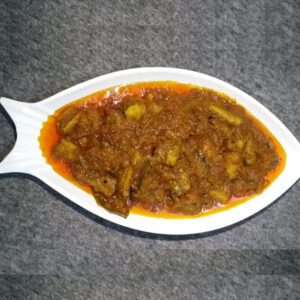 Another comforting and wholesome dish is Baim Shutki with vegetables. This dish is a whole lot of vegetables and, of course, Baim Shutki. The ingredients include potatoes, eggplant, flat beans, tomatoes, onion paste, ginger-garlic paste, chopped garlic, turmeric powder, red chili powder, green chilies, oil, salt, and water. Start by washing the vegetables, slicing them thinly, heating oil in a pan, adding the spices, and stirring until the oil comes up. Then add the Baim Shutki and cook for a while, then add the vegetables and cook for 10-15 minutes more. Once the vegetables are tender, add the green chilies and cook more. Serve the dish hot with steamed rice.
Another comforting and wholesome dish is Baim Shutki with vegetables. This dish is a whole lot of vegetables and, of course, Baim Shutki. The ingredients include potatoes, eggplant, flat beans, tomatoes, onion paste, ginger-garlic paste, chopped garlic, turmeric powder, red chili powder, green chilies, oil, salt, and water. Start by washing the vegetables, slicing them thinly, heating oil in a pan, adding the spices, and stirring until the oil comes up. Then add the Baim Shutki and cook for a while, then add the vegetables and cook for 10-15 minutes more. Once the vegetables are tender, add the green chilies and cook more. Serve the dish hot with steamed rice.
Bain Fish in Coconut Milk is a very popular Bengali dish. It is more common in the coastal regions of Bengal, where fish is abundant and coconut-based curries are popular. This rich, creamy, and aromatic dish is a delightful way to enjoy the flavors of fresh fish and coconut. The process involves cooking the fish in oil, onion, ginger paste, garlic paste, chili powder, turmeric, cumin powder, bay leaves, cinnamon sticks, salt, coconut milk, and green chilies. The whole thing comes together in about an hour.
Hope got to know Baim fish a bit more with this blog. Is Baim one of your favorite fish? What is your go-to Baim recipe? Let me know in the comments.

